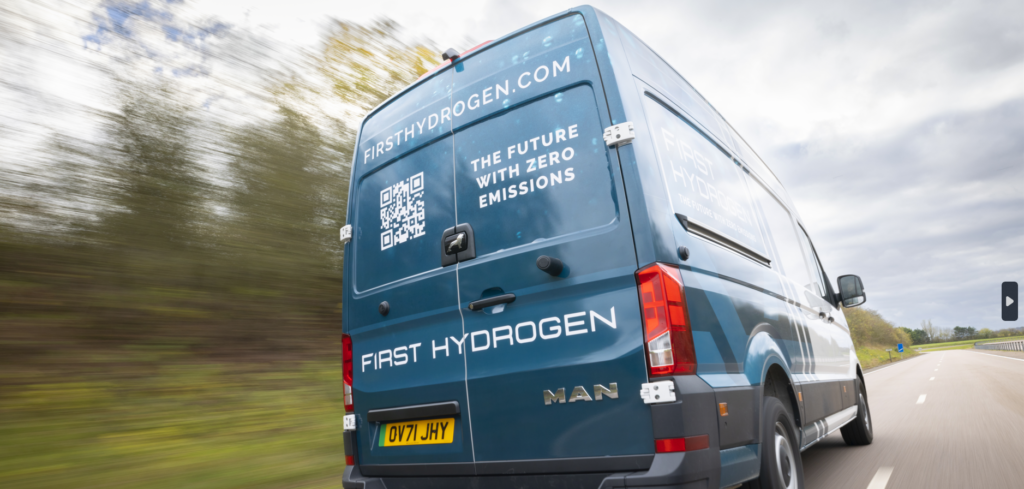First Hydrogen is opening up fleet trials of its hydrogen-fuel-cell vehicle (FCEV) to parcel delivery companies.
Following successful initial fleet operator road trials in the UK, the company’s proof-of-concept demonstrator vehicles are planned for operational trials with several parcel delivery companies looking to enhance their growing greener fleets, starting later in 2023.
Although the parcel delivery vehicles were designed to handle longer journeys, they have been equipped with hybrid engines (hydrogen fuel cell and battery), which suit shorter drives in urban and suburban areas. Regenerative braking helps to recharge the battery, particularly during journeys with lots of starts and stops, such as driving in built-up areas or routes with multiple stops – including the journeys delivery drivers make with frequent drop-offs and pick-ups. Drivers frequently make over 100 stops in a daily shift.
Refueling First Hydrogen’s LCV takes approximately five minutes whereas charging a similar electric vehicle takes around five hours. This extends daily duty cycles, with the vehicles available for longer shifts across multiple drivers, which provides fleets with greater operational flexibility.
Steve Gill, CEO of First Hydrogen Automotive, commented, “Carbon reduction targets, low- and zero-emission zones in cities and phasing out of diesel- and petrol-powered vehicles are positioning hydrogen mobility as a realistic solution to the challenges last-mile delivery operators face. Fleet managers are realizing that battery-electric vehicles (BEV) alone will not provide the reliability and operational flexibility required to meet customer demands. Future fleets require a mix of BEV and FCEV to overcome these obstacles and hit net zero targets. The large, growing parcel delivery sector desperately needs to build environmentally friendly and commercially viable fleets, and our hydrogen LCV can help to do that. This presents us with an exciting opportunity to explore a new customer base, enabling us to further accelerate business growth and potentially bring our vehicles to market quicker.”
Read more key vehicle/fleet updates from the parcel and postal technology industry, here.


